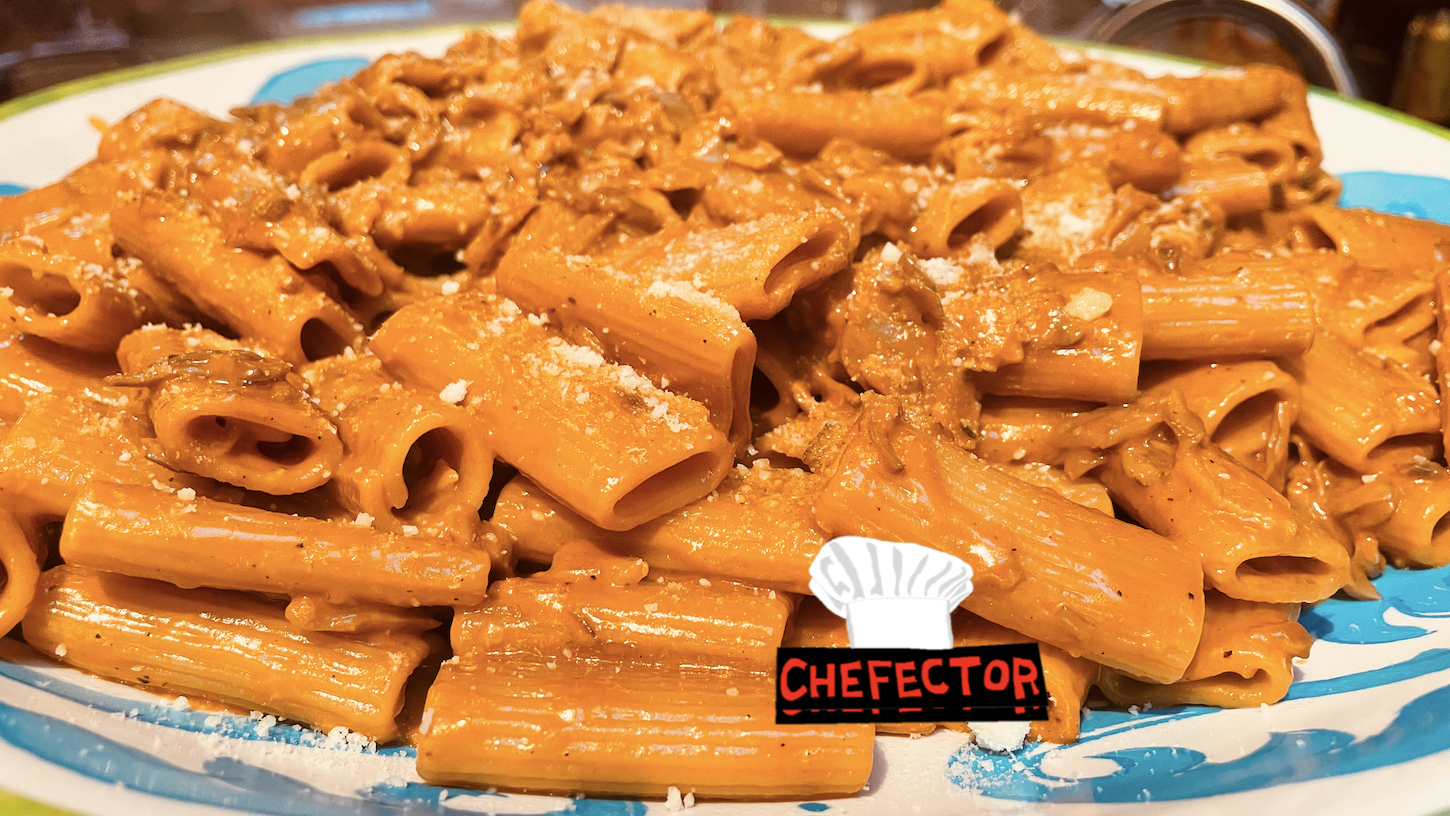It's mushroom season!
I planted mushrooms this year. Or well I "inoculated" a vast oak stump and a pair of logs with mushroom ... spores or whatever: The stump is harboring maitake, or hen-of-the-woods, which I regard as the greatest of all the mushrooms; one of the logs is an oyster mushroom incubator, and the other shiitake. None of them have actually sprouted any 'shrooms just yet, but the true rainy dark of autumn hasn't really settled in either, so I'm holding out hope.
Thankfully my yard is not the only place mushrooms suddenly appear in late September. There's also the forest! I am not halfway knowledgeable or skilled enough to forage safely for mushrooms there, but thankfully neither my yard nor the forest are the only place mushrooms suddenly appear in late September. There's also, and perhaps less thrillingly, the grocery store. That is where I bought a bunch of mushrooms this week. And made a really very delicious mushroom ragù with them!
Mushroom ragù, as the name suggests, is like the meat sauce of great renown, only with mushrooms instead of meat. I find it's best not to think of the mushrooms as a substitute for meat, which casts mushroom ragù as a sad understudy to some realer, more authentic thing. Mushrooms deserve better than that. Instead, think of mushroom ragù as a bonus seasonal ragù. Ragù but special! Or hell, think of it as your Aunt Mavis if you want. The important thing is to make some. Let's make some.
Here are some things that you will need.
You will need some mushrooms. The food in the photo at the top of this blog contained two pounds of dried rigatoni; to make a nice rich mushroomy ragù that would put at least some appreciable amount of actual mushroom in any given forkful of pasta, I used a little less than a pound and a half of maitake mushrooms (weighed before cooking, naturally). To be honest, if I'd been able to get more than that, I'd have used more than that, and the ragù would have been even better! But that is all the maitake mushrooms the store had that day. The ragù was delicious. What I am saying here is that if you want to go for, say, three quarters of a pound or more of mushrooms per pound of dried pasta, that will be swell.
As for mushroom varieties, hey, go nuts. I am on the record above and elsewhere as liking the maitake more than all other 'shrooms, but humble brown mushrooms—cremini—are glorious for this use, and so are oyster mushrooms, and I don't doubt that most other plausible varieties of mushroom would do just fine here as well. We doofus Americans like to get very excited in a goofy "Hey that's Eye-talian food!" way about the portobello mushroom, even though that is just a large brown mushroom; all you will get out of using portobello mushrooms in this ragù is a lot of needless extra chopping. (Oh right, about that: Whatever kind of mushroom you get, give them a nice rough chop.)
You will need some aromatic-type stuff. Let's say half of a big yellow or Spanish onion (or the equivalent amount of shallot) and a handful of garlic cloves per pound of pasta. Dice the onion small; mince the garlic. You will need some tomato paste. Let's say, oh, one of those little six-ounce cans of the stuff, or the equivalent amount from a tube or whatever, per pound of pasta. I have no idea how many tablespoons that is. You will need a few big glugs of olive oil, plus another couple of glugs of olive oil, but this time the really good fruity stuff that you don't cook with. And, I am totally serious about this, you will need precisely one (1) sprig of thyme per pound of pasta. Not a bundle of thyme! A sprig. An individual thyme, uh, fellow. Branch. A thymeling. You will need a sprig of frickin' thyme!
You will not need it, strictly speaking, but I certainly recommend some fatty milk product, maybe like a third of a cup per pound of pasta. Whole milk or half-and-half or, what the hell, ride the lightning with heavy cream. I don't think I need to tell you which of these I recommend. I have no idea whether non-dairy milks can be substituted, here; what I do know is that you can still have a delicious mushroom ragù without the dairy, so observers of vegan diets can simply leave it out.
In either case you will need some additional cooking liquid. Not much, maybe a cup per pound of pasta, unless you skipped the dairy, in which case add a little more of your non-dairy cooking liquid. It is OK but kind of sad for this to be water, especially if you skipped the dairy. It is better for this to be a flavorful stock, chicken or beef or vegetable, though I recognize that this might not be practical at such small volumes. It is even better—though possibly even less practical!—for this to be the (carefully strained, so as to remove all sediment) liquid leftover from rehydrating some dried porcini. If you want to trade some small quantity of this back in exchange for some splashes of dry or sweet wine, that is fine, but don't go overboard or you'll overwhelm your mushrooms instead of complementing them.
Naturally you will need salt. Mushrooms love freshly ground black pepper, or anyway I do; the mushrooms are not capable of love, but black pepper goes deliciously with them, and so: Have some. I have already used the word "pasta" like 56 times in this blog, so maybe you have already figured this part out, but you will need some pasta, preferably a short, tubular, furrowed kind: penne rigate, or rigatoni, or similar. A pound for every three adult-sized appetites you'll be addressing.
As for non-ingredient stuff, you'll need a couple of pots, one for boiling pasta and one for cooking ragù. You'll need some kind of heat-proof cup or bowl for holding a couple of cups of hot starchy pasta water that you will scoop out of the pasta pot later on. You'll need a pair of trusty cooking implements, like wooden spoons or silicone spatulas or (asking no questions, making no judgments) disembodied human arms (that have been thoroughly disinfected prior to use). You'll need some means of separating cooked pasta from boiling water: a colander, or a mesh strainer on a long handle, or a pair of tongs. You won't need but may want a nice attractive serving dish for the finished product.
I think that's it? That seems like everything. Let's cook and find out.
I'm not gonna boldface stuff in this section. OK? I feel like it ends up making things weird and cluttered when the instructions are brief, which they are in this case.
Start some water heating to a boil in the pasta pot on your stovetop. While that's happening, heat up the few hearty glugs of cooking-grade olive oil in the other pot over medium-high heat until it's shimmering but not smoking, then chuck in the diced onion. Sprinkle a pinch of salt on there, toss it all around with one or both of your implements, and cook the onion for, oh, 15 minutes, tossing it around every couple of minutes; hopefully by then it'll be translucent and soft maybe even juuuuuust beginning to brown here and there. In any event this train only moves forward, and waits for no onion.
Dump the garlic in there and give everything a few tosses. As soon as the smell of cooking garlic hits your face, in goes the tomato paste. More tossing and folding and moving stuff around now, until the onion and garlic and tomato paste and oil are all evenly mixed together, and then intermittently for the next few minutes until, hopefully, you're beginning to have some sticky caramelizing tomato paste stuck to the bottom of the pot.
Now, throw in those mushrooms, plus another lil' pinch of salt. Can you guess what you'll be told to do next? No, goddammit no, it was not going to have anything at all to do with punching your neighbor in the eye, why would you even think that. It's to do more tossing and tossing with your Cooking Instrument! The mushrooms will soften and release some liquid as they heat up; if this liquid deglazes the bottom of the pot, releasing the patina of caramelized tomato paste forming there, that's grand, but it's OK if that doesn't happen right now. Just toss everything together for a couple of minutes, until the mushrooms are hot and fragrant and you can tell that they've softened.
Add the cooking liquid to the pot. If you are using any wine, do that first, and let it simmer for a minute before adding any other cooking liquid. If you are not using any wine, then proceed with whatever cooking liquid(s) you are using all at once.
If you included the dairy, first of all heck dang yeah, kick ass, buddy. But also, you might notice now that your young ragù, thanks to the red of the tomato paste and the white of the dairy, has taken on a sort of wan Thousand-Island pink color that maybe isn't super-duper appetizing. It's fine! This color will turn ruddier as the ragù simmers—but also, like, it's fine? It's fine. It's gonna taste great.
Back to the cooking. Stir stuff around, scraping the floor of the pot as you go; now the gunk ought to come up off there. After a few minutes the liquid should be coming to a boil; lower the heat to keep it at a simmer, chuck in the one (1) thyme sprig (per pound of pasta!), grind a lot a lot a lot a lot of black pepper in there, and let the baby ragù simmer for, oh, let's say around 20 minutes. Give it a stir every few minutes just to redistribute stuff.
By the time the first 10 of those 20 minutes have gone by, the water in your pasta pot should be boiling. If it isn't, go back several paragraphs and start that pot heating earlier so that it's boiling by now. Salt the water generously, so that it tastes salty, then dump the pasta in there, stir it around, and set a timer for two minutes less than the al dente time specified on the box the pasta came in. Boil the pasta for that long, giving it a couple of stirs along the way to prevent clumping or sticking.
When there's a minute left on that timer, scoop out a couple cups' worth of water from the pasta pot into your heat-proof bowl or cup and set it aside. When the timer goes off, drain the pasta and discard the rest of the water. In whichever of the two pots has the capacity for it, combine the pasta with the ragù and the reserved pasta water over medium-high heat on the stove, and use your pair of implements to toss and toss and toss and toss and toss and toss and toss and toss and toss and toss and toss and toss and toss; as you do this, the pasta will absorb some of the pasta water, bringing it the rest of the way to al dente; some more of the water will evaporate away, leaving behind the magical starchy goo that will cause the ragù to adhere to the pasta and give it a nice satin sheen and make it wonderful.
As to that: When the ragù is thick and sticky and doesn't pool at the bottom of the pot anymore, and the pasta has that nice sheen to it, you've finished cooking your ragù. Transfer it all to your pretty serving dish, drizzle that good fruity olive oil on there, and send it to hell, by way of mouth(s).







